Mastering Postman: Environment and Global Variables
In this article, we'll explore environment and global variables in Postman, showcasing how they can help address common challenges encountered during API development.
In today’s development world, Postman stands out as one of the most versatile tools for API testing and development. A critical aspect of utilizing Postman effectively involves understanding and implementing environment and global variables. These features not only streamline your workflow but also enhance the dynamic nature of your API tests.

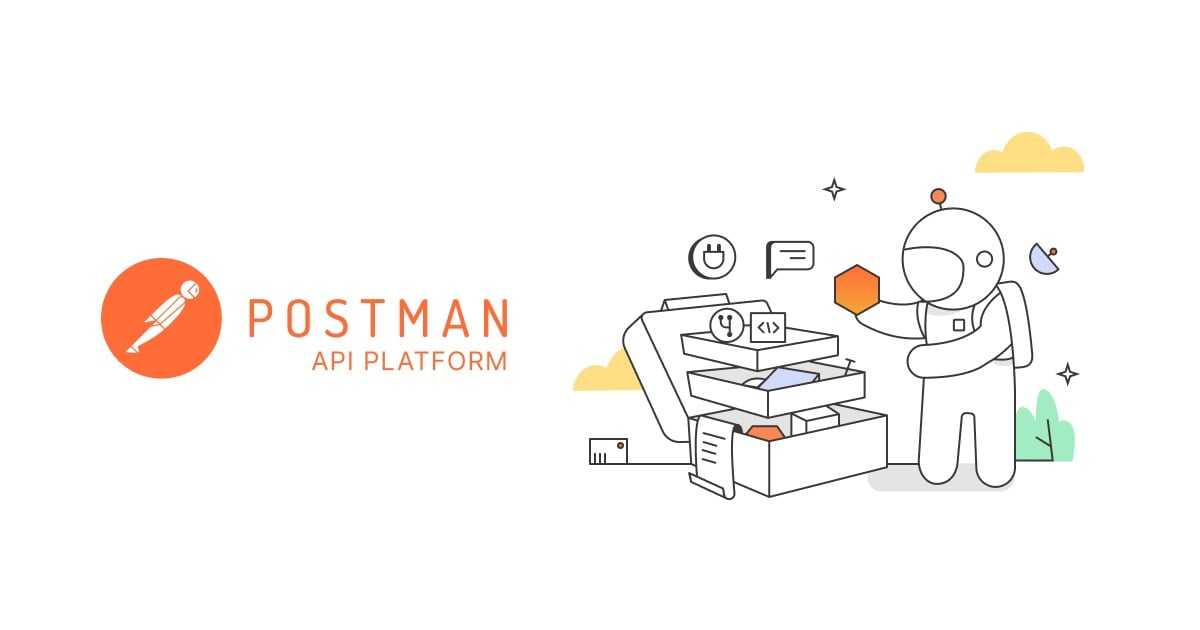
Common Challenges in API Testing

During the lifecycle of API development and testing, certain challenges frequently arise:
1. Multiple Environments: Developers often deal with multiple deployment environments like development, staging, and production. It's cumbersome to manually adjust the API’s endpoints (like IP addresses and ports) for different environments.
2. Interdependent API Calls: When APIs are dependent on each other, manually copying and pasting parameters from the response of one API to the request of another can be error-prone and inefficient.
3. Constant Parameter Updates: Manually updating request parameters for each test is not only tedious but also increases the risk of mistakes.
Overcoming Challenges with Postman Variables
Postman's environment and global variables provide a robust solution to these common issues, facilitating a more efficient and error-free testing process.
Setting Up Environment Variables
1. Creating Environments:
Provide the corresponding ‘Initial Value’ for the variable, such as the IP address for the development environment.

Under ‘Variable’, type in a variable name, such as ‘ip’.

Navigate to the ‘Environments’ section and create a new environment, for example: ‘EchoAPI Dev’.
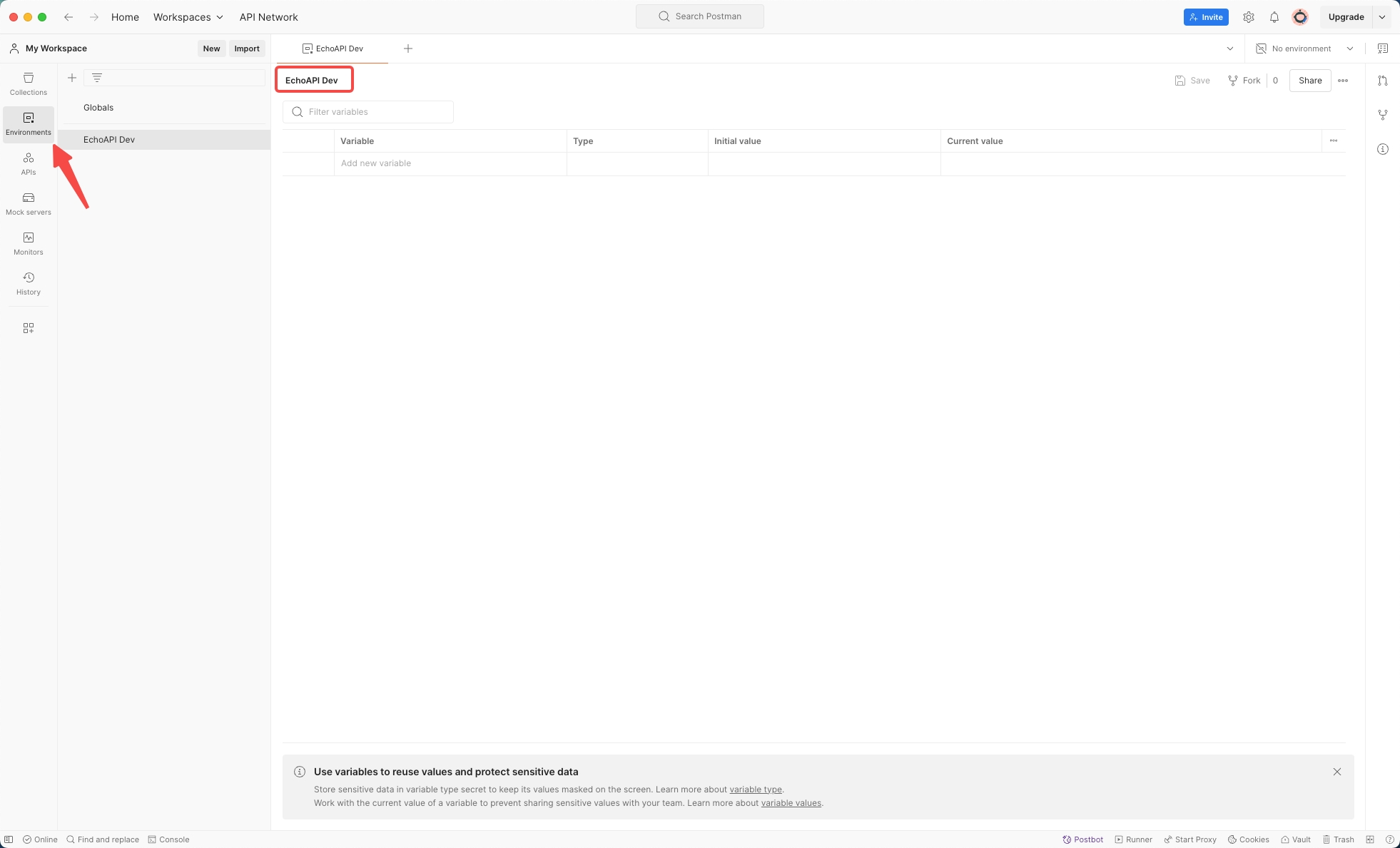
2. Replicating for Multiple Environments:
- Similarly, create additional environments like 'EchoAPI Test' and 'EchoAPI Prod'.
- In each, define the same variable ‘ip’ but assign different initial values suitable for each specific environment (testing IP, production IP, etc.).

3. Utilizing Variables in Requests:
Switch the active environment from the top-right dropdown menu in Postman to match the environment you intend to test against, and the variable will automatically reflect the correct IP address when you send a request.
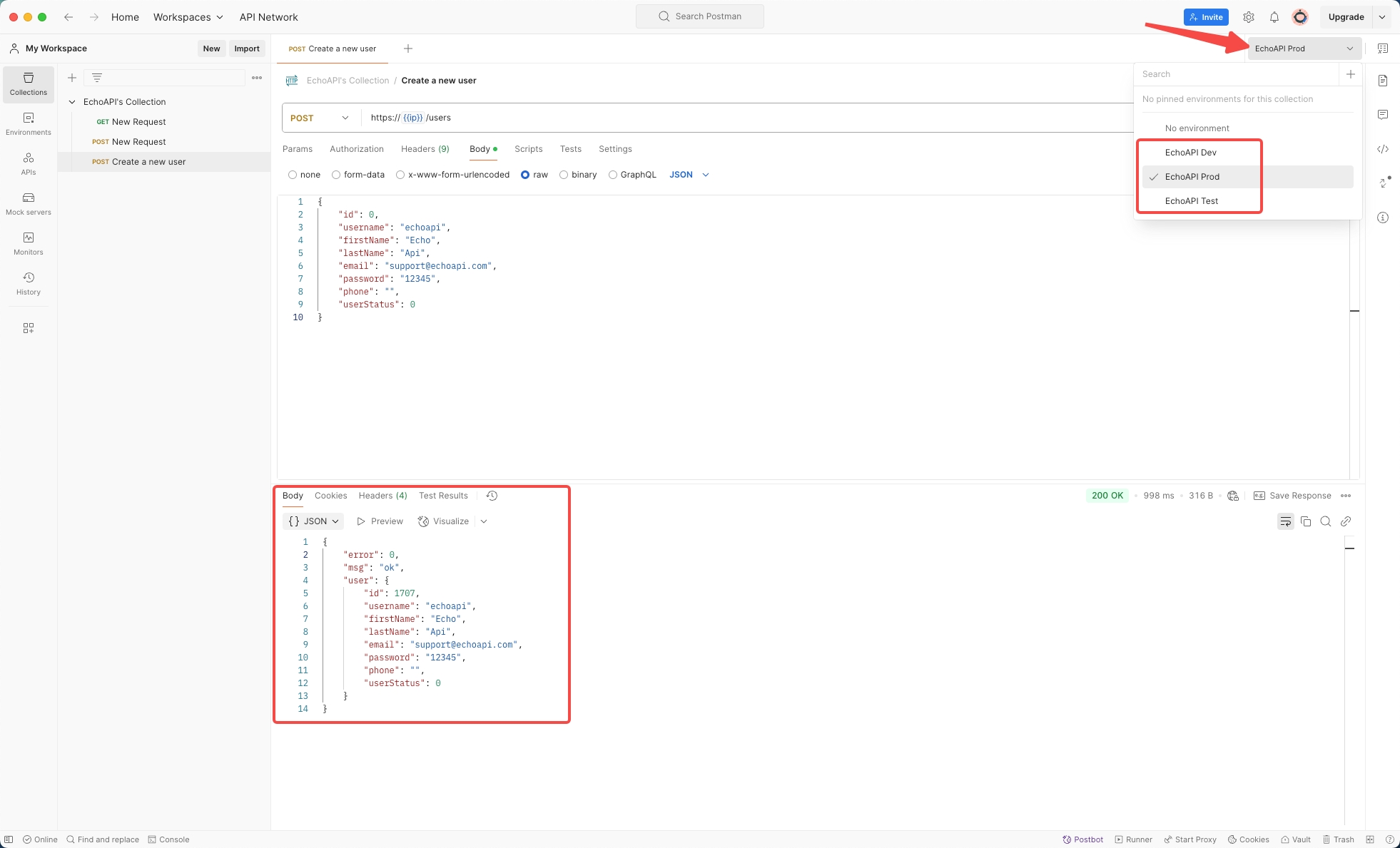
Inside your collections, reference variables by encapsulating them in double curly braces, like {{ip}}.
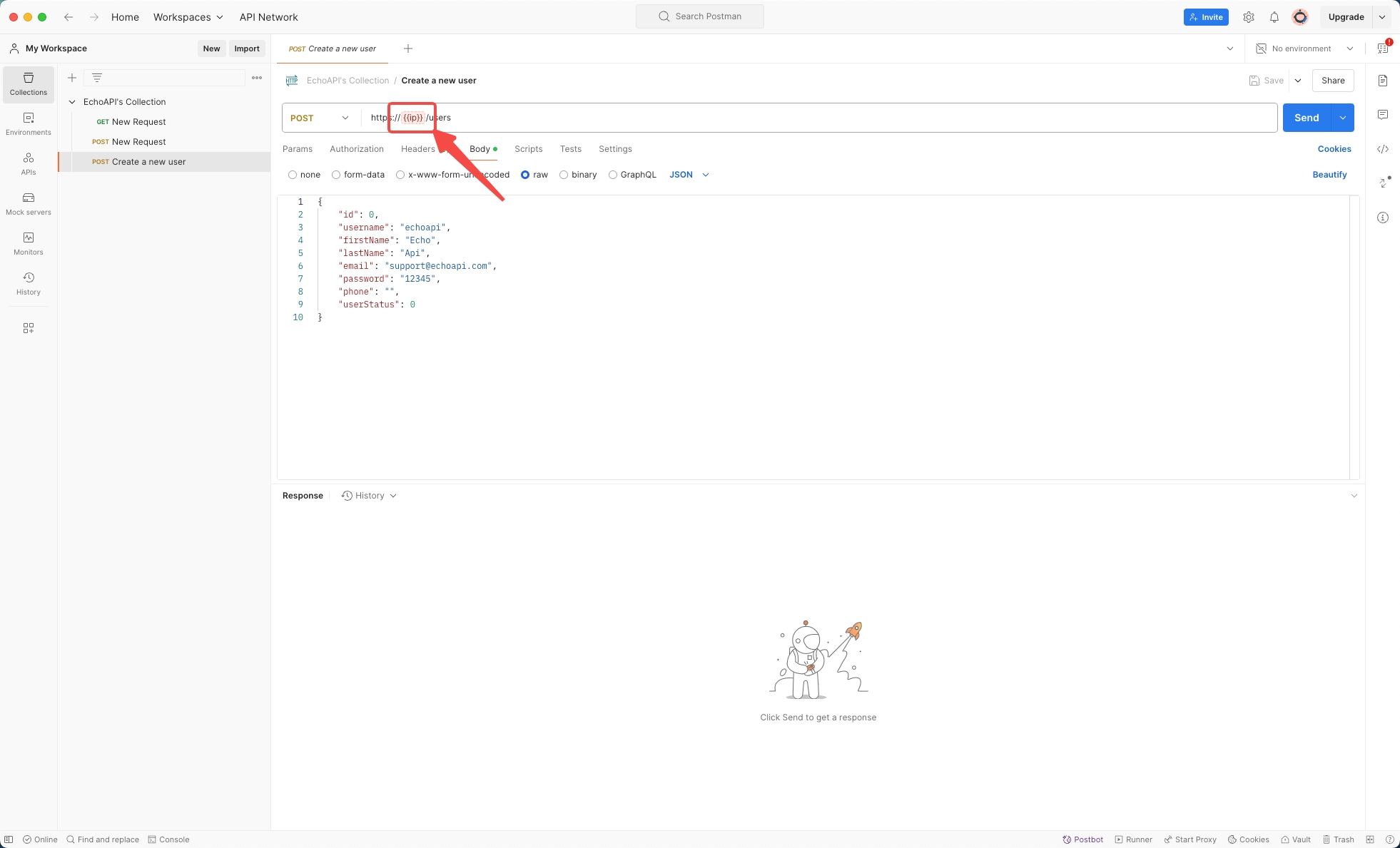
Understanding Global Variables
Setting Global Variables:
- Navigate to the ‘Globals’ section via the ‘Environments’ dropdown.
- Here, you can set variables that are common across all environments, such as API keys or universally applicable data points.
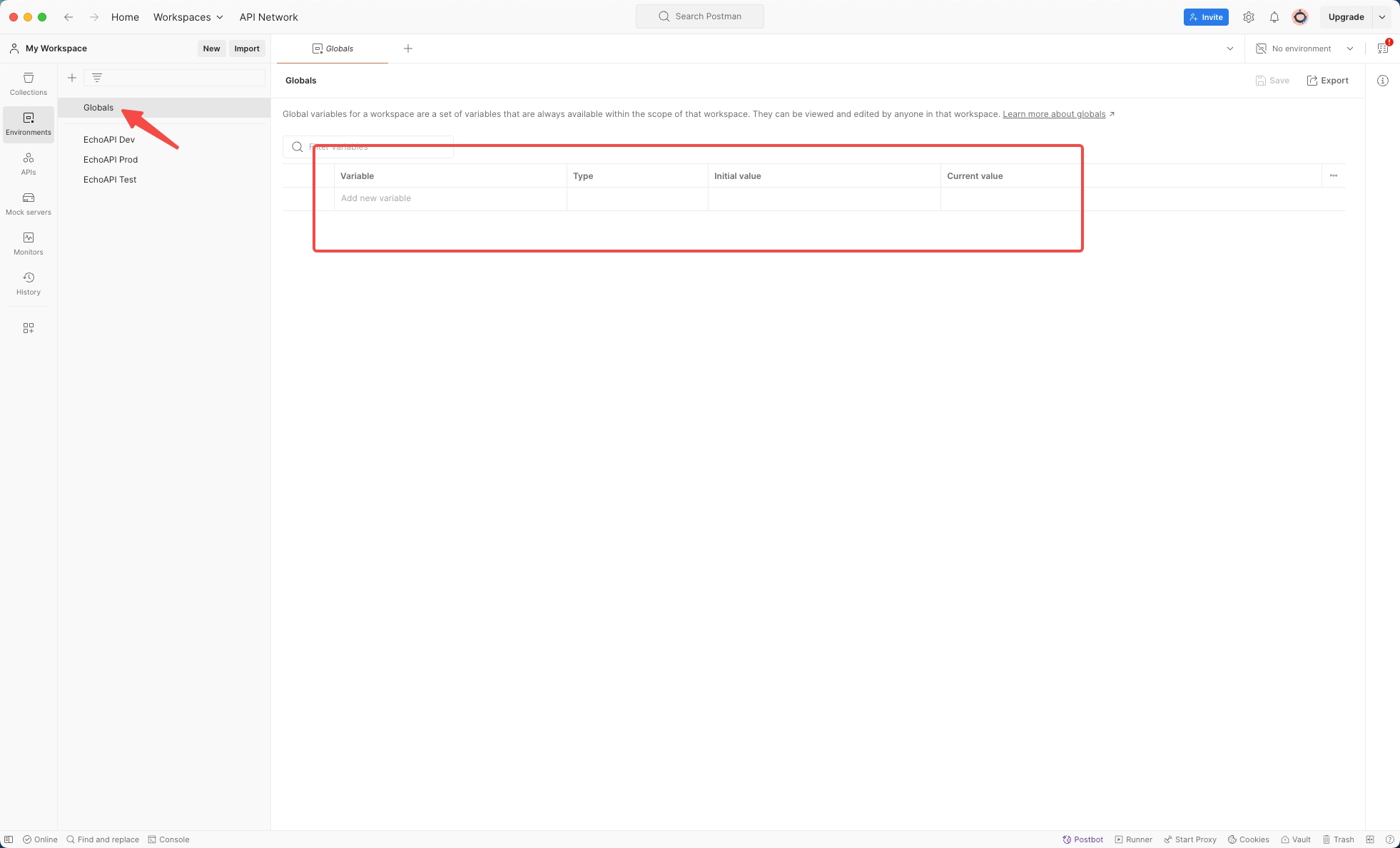
Differences Between Environment and Global Variables
The key difference between environment and global variables lies in their scope. Environment variables are specific to the environment they are created in and can have different values across environments. This is ideal for parameters that change between different stages of deployment. On the other hand, global variables are consistent across all environments and should be used for data that remains constant regardless of the testing environment, like authentication tokens.
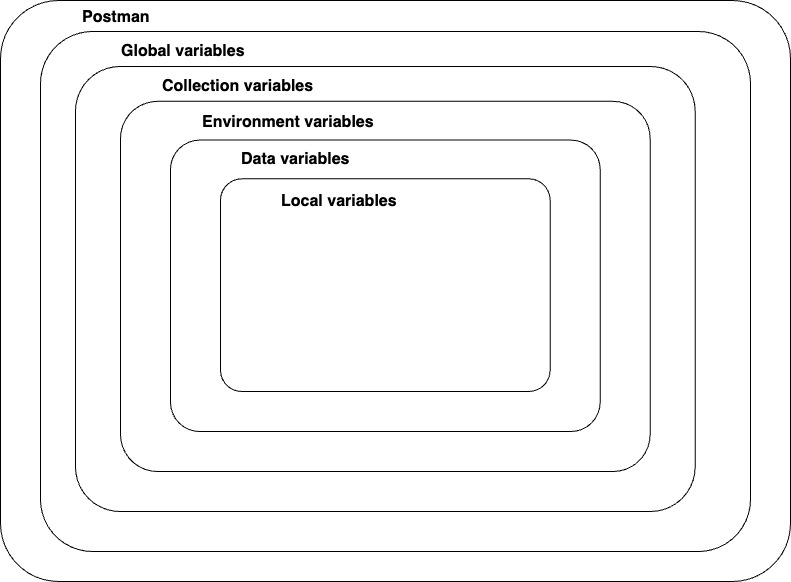
Retrieving Variable Values:
- Both environment and global variables are accessed in the same way, using the syntax
{{variable_name}}.
Conclusion
By effectively using environment and global variables, developers can streamline their API testing processes, reduce errors, and increase efficiency. Postman's capability to handle these variables efficiently makes it an indispensable tool for developers who manage APIs across multiple environments. By mastering these features, you can ensure your API tests are both robust and dynamic. Whether you're setting up a local test or gearing up for production checks, Postman's variable features help keep your tests organized and flexible.




 EchoAPI for VS Code
EchoAPI for VS Code

 EchoAPI for IntelliJ IDEA
EchoAPI for IntelliJ IDEA

 EchoAPl-Interceptor
EchoAPl-Interceptor

 EchoAPl CLI
EchoAPl CLI
 EchoAPI Client
EchoAPI Client API Design
API Design
 API Debug
API Debug
 API Documentation
API Documentation
 Mock Server
Mock Server








